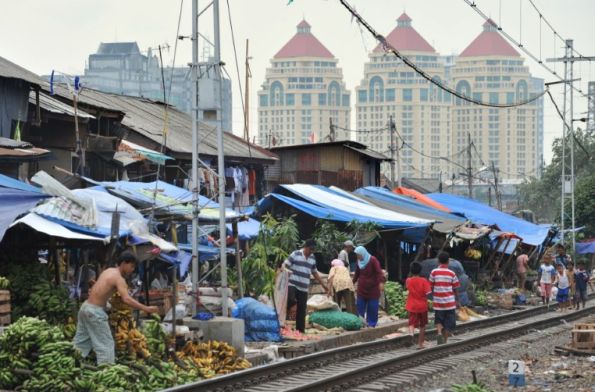A senior official of the World Bank ( WB) said on Tuesday that at least 68 million of Indonesian people are at risk of poverty, as their earnings are slightly above poor families, Xinhua reported.
“They may easily plunge into poverty, should they experience misfortunes such as suffering illness, hit by disaster and lose their jobs,” Head of WB Indonesia Representative office Rodrigo A. Chaves said in a WB-initiated event held here.
Citing Indonesia’s poverty rate figures, the official said Indonesia is facing problems in its efforts to reduce poverty as it only recorded 0.7 percent reduction from 2012 to 2013, a figure he regarded the least in the past decade.
Another problem faced by Indonesia is the growing income inequality among the society, he said, adding that it has been happening over the past several years and has potentiality to incite social conflict.
Gini Ratio
Reports said coefficient that measures inequality among income distribution (Gini ratio) in Indonesia has risen from 0.37 in 2012 to 0.41 percent in 2013.
Zero in Gini ratio expresses perfect equality, while one implies maximum inequality.
Rodrigo said persistence of poverty and income inequality problems would hinder the benefits of high growth the country has been experiencing over the past years. He said the high growth the country has achieved so far has helped it to reduce poverty rate this year, compared to 24 percent in 1999.
Indonesia recorded an average of 5.9 percent growth from 2009 to 2013.
Indonesian Central Statistic Bureau (BPS) said earlier that people living in poverty line by March this year reached 28.28 million, or lower than 28.60 million as of September last year.
In percentage, the reductions were 11.46 percent to 11.25 percent respectively.
Poverty in Indonesia
Between the mid-1960s and 1996, when Indonesia was under the rule of Suharto’s New Order government, the country witnessed a significant decline in poverty - both urban and rural - due to robust economic growth and efficient pro-poor programs.
During the Suharto period the number of Indonesians that lived below the poverty line eased from over half of the total population to 11 percent.


